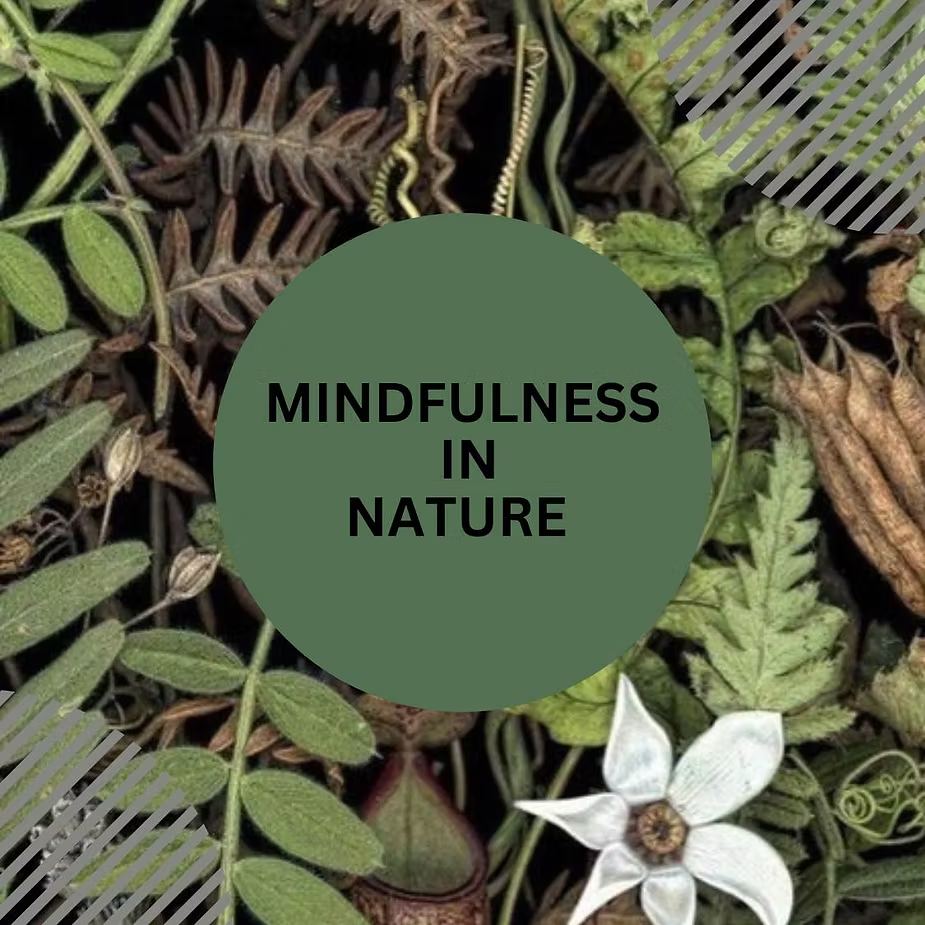“A Journey to Mindfulness in Nature”
In a world that moves at lightning speed, where notifications, deadlines, and endless to-do lists dominate our lives, nature offers a sanctuary—a place to breathe, reconnect, and simply be. Mindfulness in nature is a powerful practice that invites us to slow down, engage our senses, and immerse ourselves in the beauty and tranquility of the natural world. This practice not only enhances our connection with nature but also fosters a deeper understanding of ourselves. Here, we explore ways to embrace mindfulness in nature and discover the profound peace it can bring.
1. Begin with Presence
Mindfulness starts with presence. As you step into nature, take a moment to ground yourself. Pause at the trailhead, the beach, or even your backyard. Close your eyes and take a few deep breaths, feeling the air fill your lungs and the ground beneath your feet. With each exhale, imagine letting go of the stress and distractions of daily life. Open your eyes slowly and take in your surroundings. Notice the colors, textures, and patterns around you. This moment of grounding sets the tone for a mindful experience.
2. Engage Your Senses
Nature offers a sensory feast, and engaging your senses is a cornerstone of mindfulness.
Sight: Observe the intricate details of a leaf, the play of sunlight through branches, or the ripples on a pond. Let your eyes wander naturally, taking in the big picture and the minute details.
Sound: Close your eyes and listen. Can you hear the rustling of leaves, birdsong, or the distant hum of insects? Try to identify individual sounds and notice how they weave together.
Touch: Run your fingers over tree bark, dip your hand in cool water, or feel the softness of moss. Notice the textures and sensations.
Smell: Breathe in deeply and detect the earthy aroma of soil, the sweetness of flowers, or the freshness of rain-washed air.
Taste: If safe, taste the fresh air or a piece of fruit picked during your walk. Notice the flavors and how they connect you to the moment.
3. Slow Down and Observe
In nature, there is no rush. Adopt the pace of the environment around you. Watch how a butterfly flits from flower to flower or how the wind gently sways the grass. Sit by a stream and observe the patterns of water flowing over rocks. Let your mind settle into the rhythm of the natural world, free from the urgency of time.
4. Practice Gratitude
Gratitude enhances mindfulness by fostering appreciation for the present moment. As you explore nature, take a moment to reflect on what you’re grateful for. It could be the warmth of the sun on your skin, the vibrant colors of wildflowers, or simply the opportunity to be outside. Gratitude deepens your connection to nature and reminds you of the abundance around you.
5. Move with Intention
Walking or moving mindfully in nature is a meditative practice in itself. Focus on the sensation of your feet touching the ground, the rhythm of your steps, and the movement of your body. If you’re hiking, notice how your muscles engage as you climb or descend. Walking with intention turns every step into a mindful act.
6. Embrace Stillness
While movement is valuable, stillness can be equally transformative. Find a quiet spot to sit or lie down. Observe how nature continues to move and change around you. Feel the breeze on your skin, the warmth of the sun, or the coolness of shade. Let your thoughts come and go like passing clouds, anchoring your attention to the present moment.
7. Connect with Your Breath
Your breath is a constant companion and a powerful anchor for mindfulness. Inhale deeply and feel the life force of nature entering your body. Exhale and imagine blending your breath with the wind. Sync your breathing with the natural rhythms around you, creating a sense of unity with the environment.
8. Reflect and Journal
After your time in nature, take a few moments to reflect. What did you notice? How did you feel? Journaling your experiences can help you process your thoughts and deepen your connection to mindfulness. Write about the sights, sounds, and sensations you encountered, as well as any insights or emotions that arose.
9. Make It a Habit
Mindfulness in nature is not a one-time experience but a practice to cultivate over time. Whether it’s a daily walk, a weekly hike, or simply sitting in your garden, make time to reconnect with the natural world regularly. Each visit will strengthen your mindfulness practice and enrich your relationship with nature.
The Transformative Power of Nature and Mindfulness
Practicing mindfulness in nature is more than a retreat from the noise of daily life; it’s a way to nurture your well-being and deepen your awareness. In the quiet presence of trees, the steady flow of rivers, or the vastness of the sky, we find a mirror to our inner selves. Nature teaches us to slow down, be present, and appreciate the simple yet profound beauty of the world. By embracing mindfulness in nature, you invite peace, clarity, and connection into your life.
So, the next time you step outside, pause, breathe, and immerse yourself fully. Nature is waiting to share its wisdom with you.


